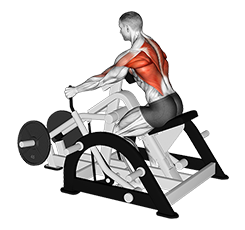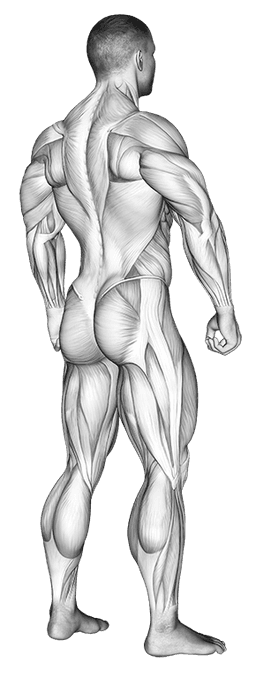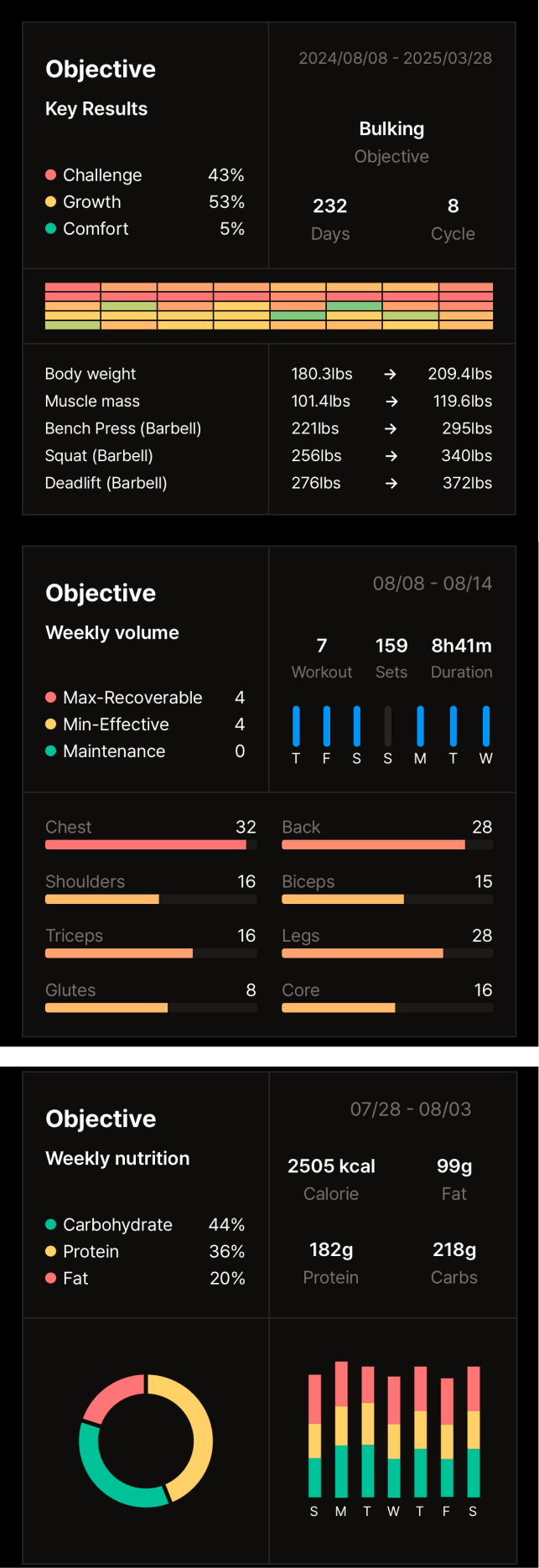
Iso-Lateral Row (Machine)
A seated rowing exercise using an iso-lateral machine, emphasizing controlled movements and balanced muscle activation.
Muscle Targets Visualizer
Muscle Targeting Visualizer






Primary Muscle
Secondary Muscles
Strength Level Tracker
Track Your Progress Like a Pro
Iso-Lateral Row (Machine)
Average of all records in a cycle
Step-by-Step Instructions
1. Machine Setup
Adjust the seat height and handle position so that your knees are slightly bent and your arms are fully extended, but not locked, when you grab the handles. Your back should be straight, but not overly arched.
- Ensure your feet are flat on the floor.
- Adjust the seat so you feel comfortable and supported.
2. Grip the Handles
Grip the handles firmly with a neutral grip (palms facing each other). Ensure a secure grip before beginning the exercise.
- Avoid gripping the handles too tightly to prevent unnecessary tension.
- Maintain a consistent grip throughout the movement.
3. Pull the Handles
Pull the handles towards your abdomen, squeezing your shoulder blades together. Maintain a controlled movement, avoiding jerking.
- Focus on using your back muscles to initiate and control the movement.
- Maintain a straight back throughout the movement.
4. Controlled Return
Slowly return the handles to the starting position, resisting the movement as you extend your arms. Avoid letting the weight drop.
- Maintain a steady pace throughout the repetition.
- Concentrate on the controlled movement to fully engage the target muscles.
5. Repeat
Repeat for the desired number of repetitions, maintaining proper form throughout the set.
- Focus on maintaining good form even as you fatigue.
- Adjust the weight as needed to ensure proper form throughout the set.
Form Tips
✓Maintain a Straight Back
Avoid rounding your back at any point during the exercise. Maintain a neutral spine to prevent injury.
✓Controlled Movement
Avoid using momentum. Focus on a slow, controlled movement throughout the exercise.
✓Squeeze Your Shoulder Blades
Squeeze your shoulder blades together at the peak of the contraction to fully engage the latissimus dorsi muscles.
✓Full Range of Motion
Ensure that you fully extend your arms at the beginning of each repetition and pull the handles close to your abdomen.
Common Mistakes
Using momentum to lift the weight
Focus on controlled movements, using your back muscles to initiate the pull.
Rounding the back during the exercise
Maintain a straight back, engaging your core to stabilize your spine.
Pulling with the biceps instead of the back
Focus on squeezing your shoulder blades together during the pull.
Not fully extending arms at the start of the movement
Ensure a full range of motion by fully extending your arms at the beginning of each repetition.
Using too much weight
Reduce the weight to allow for controlled movements and maintain proper form.
Alternative Exercises
- Iso-Lateral Row (Close Grip)
- Iso-Lateral Row (Wide Grip)
- Iso-Lateral Row (Neutral Grip)
- Iso-Lateral Row (Single Arm)
Complementary Exercises
- Lat Pulldowns
- Seated Cable Rows
- Face Pulls
- Dumbbell Rows

